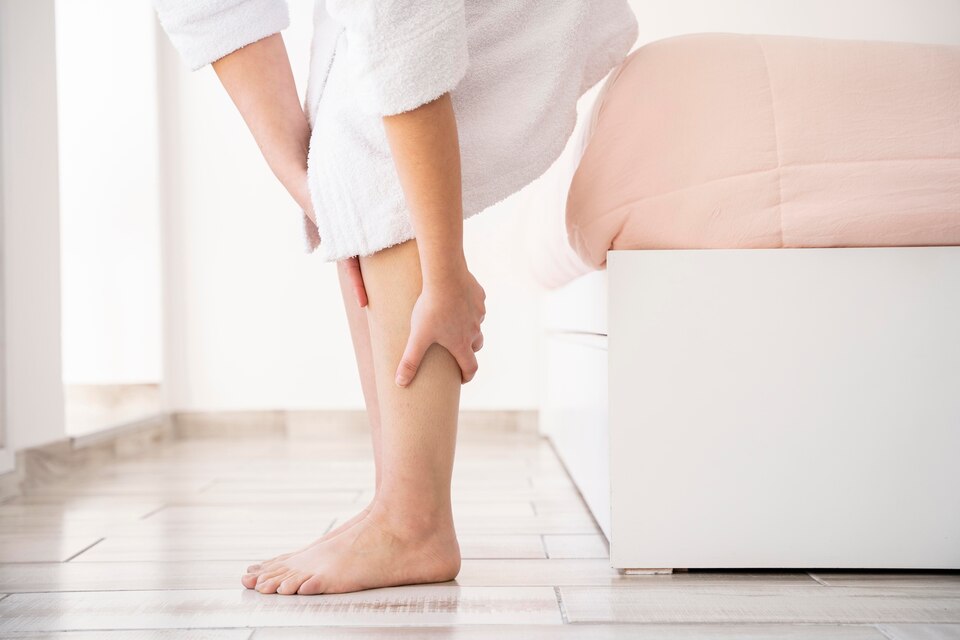In today’s sedentary and screen-driven lifestyles, swelling of the legs has become increasingly common. While occasional puffiness might not be alarming, persistent or severe discomfort could signal deeper health concerns. By identifying the correct leg swelling reason, individuals can take timely steps to protect their vascular and muscular health.
This article explores the frequent causes of leg swelling, from lifestyle habits to serious medical conditions, and offers guidance on prevention and management.
What is swelling and why does it occur?
Swelling in the legs generally results from the accumulation of fluid in the tissues, a condition referred to as peripheral oedema. This can affect the feet, ankles, and calves. Temporary fluid retention is often benign, especially after long periods of inactivity. However, understanding the leg swelling reason is critical, particularly when symptoms persist or worsen over time.
Accumulated fluid may stem from minor factors like poor posture or more serious issues such as heart or kidney disease. Recognising the true cause is essential to choosing the right course of action.
Lifestyle-related leg swelling reasons
Extended screen time and inactivity
A major leg swelling reason today is the prolonged use of computers, tablets, and smartphones without adequate movement. Sitting still for extended periods impairs circulation, causing fluid to pool in the lower extremities. The veins must work against gravity to return blood to the heart, and immobility makes this task more difficult.
Simple remedies such as taking short walks, flexing the calves, and standing up regularly can significantly mitigate fluid build-up.
Poor posture habits
Maintaining an improper posture, such as slouching or frequently crossing the legs, also contributes to leg discomfort. Over time, these habits place pressure on veins and muscles, disrupting blood flow and creating another common leg swelling reason.
Employing ergonomic seating, supporting the back properly, and adjusting screen height can promote better circulation and reduce symptoms.
Sedentary lifestyle
Beyond work habits, a generally sedentary routine remains a key leg swelling reason. Lack of physical activity weakens the muscles responsible for aiding blood flow from the legs back to the heart. Strengthening calf muscles through walking, cycling, or specific exercises significantly helps to prevent fluid accumulation.
Even moderate daily movement can make a substantial difference in maintaining lower body health.
Medical causes of leg swelling
Deep vein thrombosis (DVT)
One of the more serious leg swelling reason categories is DVT, where blood clots develop in deep veins, typically in the legs. Symptoms may include sudden puffiness, warmth, redness, and pain. Immediate medical intervention is critical as dislodged clots can cause life-threatening complications like pulmonary embolism.
Awareness of DVT signs ensures that professional treatment is sought without delay.
Chronic venous insufficiency
When veins become damaged and valves fail to function correctly, blood can pool in the legs. This leads to ongoing discomfort, heaviness, and puffiness. Chronic venous insufficiency stands as a significant leg swelling reason, especially in individuals with a history of varicose veins or prolonged standing.
Treatments may involve compression therapy, lifestyle modifications, or medical procedures to improve venous function.
Heart, kidney, and liver conditions
Major organ diseases can also manifest as leg puffiness. In congestive heart failure, the heart struggles to pump blood effectively, causing backflow into the legs. Similarly, kidney dysfunction affects the body’s ability to eliminate excess fluid, while liver disease impacts protein production, leading to fluid leakage into tissues.
Recognising these systemic conditions as a potential leg swelling reason is vital for timely diagnosis and management.
Other contributing factors
- Injury or trauma: Sprains, fractures, and tissue damage can cause localised puffiness.
- Infections: Conditions like cellulitis result in redness, heat, and tenderness alongside swelling.
- Medication side effects: Certain blood pressure medications, steroids, and anti-depressants can lead to fluid retention.
- Pregnancy: Hormonal changes and increased pressure on veins during pregnancy create another common leg swelling reason.
Understanding all possible triggers ensures a comprehensive approach to addressing symptoms.
When to seek medical advice
Not all instances of leg puffiness require urgent care, but prompt consultation is necessary if:
- The swelling appears suddenly and is unexplained
- There is associated pain, redness, or a feeling of warmth
- The symptoms are persistent and progressive
- Shortness of breath or chest discomfort accompanies the swelling
Seeking early medical assessment improves outcomes and reduces the risk of serious complications.
Preventive measures to minimise leg swelling
Several simple habits can prevent or reduce fluid retention:
- Frequent movement: Break long periods of sitting by standing, stretching, or walking.
- Leg elevation: Raising the legs above heart level periodically aids venous return.
- Hydration: Drinking sufficient water prevents fluid imbalances.
- Compression garments: Medical-grade stockings can assist circulation, especially for those with venous issues.
- Healthy weight maintenance: Reducing pressure on the legs through weight management supports vascular health.
Incorporating these habits can significantly lower the risk associated with many lifestyle-related causes.
Conclusion: Awareness and proactive care
Leg puffiness should never be ignored, particularly when persistent or accompanied by other concerning symptoms. By identifying the correct leg swelling reason, whether it is due to extended screen time, poor posture, injury, or an underlying health condition, individuals can take proactive steps towards better health.
Early recognition, appropriate lifestyle modifications, and seeking timely medical care ensure that swelling remains a manageable concern rather than a sign of deeper problems.





